Atty. Eyal Mamo, who serves as the chair of the District Appeals Committee for Planning and Construction of the central district: “Contractors have agreed to pay to rouse a blackmailer just so he’ll stop the contiuned foot-dragging and damage; processes are undermined with insufferable ease”
Professionals from a broad range of relevant bodies participated in a special seminar held recently, sponsored by the Faculty of Architecture and Town Planning and the Center for City and Regional Studies at the Technion, and devoted to the reform of the Planning and Building Law: the Ministry of Justice, the Ministry of the Interior, the Planning Administration, the Society for Protection of Nature in Israel, the local committee, the Association of Contractors and Builders in Israel, the Association for Civil Rights in Israel and many more.
During the seminar, the event’s organizers, Prof. Rachel Alterman and Dr. Dafna Carmon of the Technion, launched their new book, “Will you hear my voice?”, which deals with rights of Israeli citizens to object to the proceedings of planning institutes. The two researchers remarked that in comparison to citizens of other democratic states in the world, Israelis actually exploit their right to be heard in planning and building proceedings quite well. Nevertheless, against the backdrop of the reform that is in advanced planning stages, it appears that the public’s dependence on professionals such as lawyers and engineers will increase in the coming years.
Participants in the seminar who grappled with the question of how much the reform of the Planning and Building Law will affect the citizen’s right to object to the building of an apartment tower opposite the window of his or her home, or even less than this, to object to his or her neighbor’s request to build a balcony – will now be better able to understand the implications of the new law.
“In the 1980s, before those objecting to building plans were required to submit a declaration, only 24% of the people who were opposing a plan were represented by lawyers; in the last decade this group has grown to 63% of all objectors,” Prof. Alterman revealed. “In contrast, in Britain, for example, only 10% of those objecting to a plan represented by a lawyer and in Holland 20%-40% of the objectors were helped by lawyers. In Holland, by the way, public notice by the committees is much clearer and appears in newspapers delivered to people’s homes for free.”
According to her, “The reform does not get rid of the essential bureaucratic obstacles that impair residents’ rights to oppose plans. Today, residents must submit a declaration signed by a lawyer as a condition for objecting. The reform will not just make it any less easy for the public to object to a plan; it is takes an even harder line on this issue and after it becomes law, each person objecting to a plan will be required to note which changes he or she wants to include in the plan – a directive that is liable to again create a need for lawyers and other professionals.”
As a result of this, the researcher recommends establishing a body similar to the public defender that can assist residents challenging building plans. “I would recommend to the planners of the law reform to set up a public defender for planning and building issues. In this way, we can give the entire public an equal chance and also help stop the phenomenon of making every issue a matter for lawyers, which drives away everyone who is afraid they will not be able to afford legal assistance,” says Prof. Alterman.
Today, the people opposed to a plan come to the committee themselves to voice their objections. However, according to the new law, the committee will appoint its own investigator to listen to the challengers who will submit his conclusions to the committee. “This procedure is indeed expected to be more efficient and perhaps even more thorough, but the price of this efficiency is that one person only, who is not elected by the public, will listen to the arguments and reach a conclusion according to his own personal point of view. In addition, our data shows that whoever hires a lawyer does not necessarily reach a better result as far as this individual is concerned,” say the researchers.
Alongside the criticism, the participants noted the significant improvement in the ability of stakeholders to oppose a plan, even those who are not directly related to the property and the cancellation of the special and problematic status of public bodies. The reform initiated by Prime Minister Benjamin Netanyahu, which is intended to simplify and shorten planning and building procedures, has other advantages: the stage of public notice has been moved up to the planning stage, the requirement for giving public notice has been broadened and it also includes using the Internet, which will increase the public’s accessibility to information (Prof. Alterman: “This is mainly good for the public surfing the Internet…”) and the right to object now also applies to national plans.
The district commissioner of Haifa of the Ministry of Interior Major-General (Ret.) Yosef Mishlev, making his first visit to the Technion, said that his impression is that 90% of those who submit objections today are lawyers. “Even lawyers who object turn to lawyers who specialize in this type of law and have them represent them in the proceeding,” he said. “An investigator has more time to listen to objections, but because of the use of an investigator, I, as the head of the committee, will lose my direct contact with the person himself.”
Mishlev stressed that, “in my opinion, the public’s participation in the reform has been too little too late. As the Home Front Commander, I learned that the earlier the population gets involved, the better is their ability to cope with a crisis. I believe it unsound to allow anyone to object. Objections should be limited only to those whom the issue touches. We must streamline the process and not make it more cumbersome.”
Acting head of the Planning Commission, architect Doron Drukerman, voiced his disagreement with the perception that the procedure moves on a scale of transparency through to efficiency. “The objections to the planning stage appear at a late point,” he said, “When the planning institute decides to deposit the plan, effort has already been invested by the businessmen and we are in a position such that if no objections are submitted, the plan is automatically authorized. There is a sense of inevitability. It is preferable to identify objections ahead of time in order to find the appropriate solution.”
The representative of the Association of Contractors and Builders, attorney Eyal Mamo, who serves as the chair of the District Appeals Committee for Planning and Construction of the central district, focused on the fact that every person has the right to object and submit an appeal. “We know many cases where contractors agreed to pay to rouse a blackmailer only so that he will stop the foot-dragging and financial damage coming from this,” he said. “Processes are undermined with insufferable ease. Submission of an appeal must happen in such a way that the losing party pays for the expenses caused to the other party. They must also pay the fees. This is the way to screen out a significant percentage of objections.”

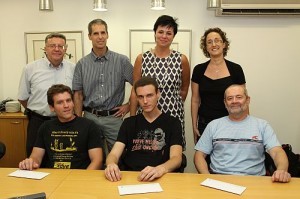 Generating energy by working out at the gym, checking real-time energy consumption & exploiting Technion’s position on the slopes of the Carmel
Generating energy by working out at the gym, checking real-time energy consumption & exploiting Technion’s position on the slopes of the Carmel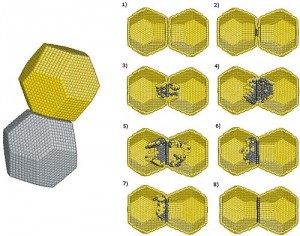 Nanopowders are the basis of many nanotechnologies; Technion researchers coin a new term in the field of nanomechanics: “pseudo-elasticity”
Nanopowders are the basis of many nanotechnologies; Technion researchers coin a new term in the field of nanomechanics: “pseudo-elasticity”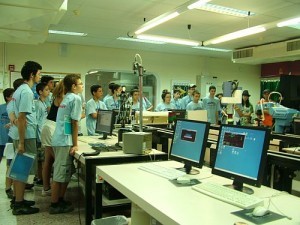 Approximately 700 students, from all over the north of the country, from 5th grade through to 12th grade, participated in two summer sessions given by the Science Programs for Youth division of the Technion. In addition, 44 young people participated in the international science camp, “SciTech 2011”.
Approximately 700 students, from all over the north of the country, from 5th grade through to 12th grade, participated in two summer sessions given by the Science Programs for Youth division of the Technion. In addition, 44 young people participated in the international science camp, “SciTech 2011”.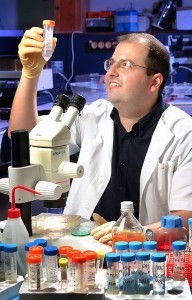 The prestigious prize is awarded each year to two young researchers for “exceptional achievements in the first stages of their scientific careers”
The prestigious prize is awarded each year to two young researchers for “exceptional achievements in the first stages of their scientific careers”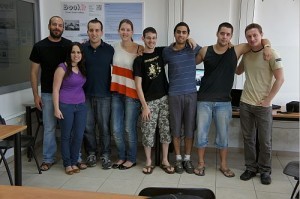 A group of students from the Faculty of Computer Science at the Technion have created an application that “writes a book on its own”, in any topic specified by the user
A group of students from the Faculty of Computer Science at the Technion have created an application that “writes a book on its own”, in any topic specified by the user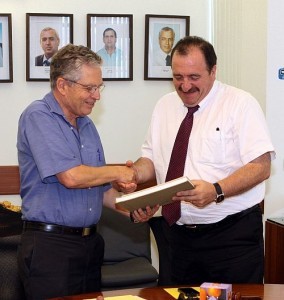 A joint Mekorot–Technion work plan for the next five years is to be formulated soon. The decision comes during a tour of Mekorot’s Eshkol site by representatives from the Faculty of Civil & Environmental Engineering
A joint Mekorot–Technion work plan for the next five years is to be formulated soon. The decision comes during a tour of Mekorot’s Eshkol site by representatives from the Faculty of Civil & Environmental Engineering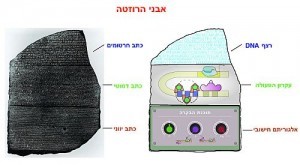 They hope that in the future this will enable the translation of the genome’s “operating system”; they are working in the new field of synthetic biology and believe that this will be “the high tech of bio tech”
They hope that in the future this will enable the translation of the genome’s “operating system”; they are working in the new field of synthetic biology and believe that this will be “the high tech of bio tech”